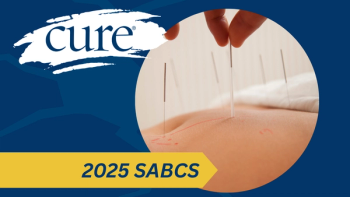
My Decision to Have a Double Mastectomy Without Reconstruction
While the surgeon suggested I have a lumpectomy followed by radiation treatments, I had already made my decision. I requested a double mastectomy without any type of reconstruction. Why would I pursue such a radical alternative? In this post, I explain my choice.
It all began with a simple phone message.
“There was a problem with your mammogram. You need further testing. Please call us back.”
It was late September 2014. A week later, I had a diagnostic mammogram, ultrasound and biopsy. Soon thereafter, my husband and I learned from a surgeon that there was a small cancer growing in my right breast.
Unlike so many other women who receive this diagnosis, I was not surprised. In fact, in many ways I had been waiting for the dreaded news. I come from a family where
And so, my husband and I found ourselves in the office of the chief of breast oncology surgery at Massachusetts General Hospital in Boston around early October. While the surgeon suggested I have a lumpectomy followed by radiation treatments, I had already made my decision. I requested a double mastectomy without any type of reconstruction.
Why would I pursue such a radical alternative? My mother and one of her sisters chose the removal of the affected breast; the other sister opted for a lumpectomy and radiation. My cousin decided to have reconstruction after the removal of the affected breast, but the process required three surgeries.
When I received my diagnosis, I was 66 years old. I already had a few medical problems, including high blood pressure, celiac disease and an autoimmune disorder. I knew that any form of reconstructive procedure would add hours to the surgery and increase the risk of complications, such as infection. Because of my family’s history, I was already well-versed on the topic. I had read about one horror story after another. I had heard my mother and aunt repeatedly say that they wished they had removed both breasts. I can’t remember how many times each said how much they didn’t want to wear a prosthesis. Since they were each well-endowed, they knew that the lack of symmetry would be obvious. Though I was far less endowed, I knew I would also find the lack of symmetry unnerving.
And so, years before the diagnosis, I made my decision. I would have the only surgery with which I was comfortable — a double mastectomy. The procedure, which took between three and four hours, was in early November. A few weeks after my surgery, during a review of the pathology report, I learned that I had pre-cancerous cells in my left breast. Obviously, there was a good chance that they would have developed into cancer. If I had chosen to keep the left breast, I would probably have found myself having another surgery a few years later.
In many ways, having a double mastectomy has not changed my life. I am still a wife, mother and grandmother (“Mermie”) to five grandkids. I continue to research and write non-fiction books, as I did before my surgery. I exercise almost every day, and eat a healthy diet. But I did that even before the cancer diagnosis.
However, since the surgery, I am acutely aware that my breast cancer may recur, as it did with my mother and cousin. Still, that may not take place for many years. My mother — who was diagnosed at the age of 73 – lived until she was 83. My cousin, who was diagnosed when her daughters were girls, was able to guide them into young adulthood. Because of my type of breast cancer, I now take a daily anti-estrogen medication. I need to visit the breast oncology department of Massachusetts General Hospital every six months. I imagine this will continue for the rest of my life.
I have also had to learn to wear a different type of clothing. Since I have no breasts and chose not to wear any form of prosthesis or breast replacement, I no longer wear tops that cling. In the colder months, I normally begin with a camisole and then layer my clothing. In the warmer months, I wear looser tops, usually with some type of distracting pattern. I obtain many of my ideas from an online group known as “Flat & Fabulous,” a community of women who have undergone mastectomies and have chosen not to have reconstruction. The site is located on Facebook, and membership is free. I learned about this group shortly before my surgery; members are continuously posting photos of themselves wearing flattering clothing. In most cases, it is impossible to tell that the women have no breasts.
I have also become a somewhat vocal advocate for annual mammograms. Beginning with my first mammogram at the age of 40, I never skipped or delayed that important test. I have been told that some groups and organizations advise older women to have mammograms every other year. My previous mammogram had been completely normal. If I had followed the every-other-year guideline and had waited an extra year, the cancer, which was already starting to spread, would probably have spread further, perhaps beyond my breast. My treatment would have been far more debilitating, and my prognosis would not be as hopeful.
Unless I am dressing after my morning shower or preparing for bed at night — times when it is nearly impossible to avoid the two long scars that cross my chest – I have moved on. Though breast cancer will always be intricately interconnected with my life and I will always promote early detection, life remains exciting. There are so many more lessons to be learned and challenges to be met, and for me, these will be embraced with continued optimism and enthusiasm.





